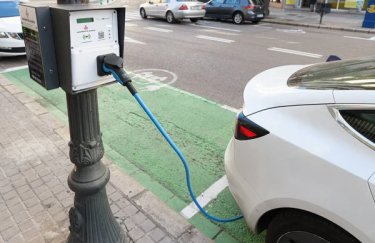
Brexit — a portmanteau for “British exit” — has generated a lot of very specific lingo.
And those terms to describe and define the United Kingdom’s breakup with the European Union can sometimes make this already complicated process even harder to follow.
Here’s a handy glossary of Brexit terms, with some links to more in-depth coverage, to help you better understand this slow-moving political divorce ahead of the new January 31, 2020 deadline.
Article 50
This is a section in the European Union’s Treaty of Lisbon, the international agreement that lays out how the EU functions. Article 50 gives member states the power to leave the bloc.
The United Kingdom triggered Article 50 on March 29, 2017, when then-British Prime Minister Theresa May gave notice to European Council President Donald Tusk that the UK planned to leave the bloc. That kicked off the formal start of EU-UK negotiations and the two-year countdown until the UK’s official exit.
The Article 50 period for the UK was set to expire on March 29, 2019, but the rest of the EU member states agreed to extend it until at least April 12.
May asked for another extension in April, and EU leaders agreed to delay Brexit again, this time until October 31, 2019. Any postponement requires the unanimous agreement of all EU member states.
When Prime Minister Boris Johnson took office in July, he promised to take the UK out of the EU on that date; but he, too, ended up having to seek an extension because of an act of Parliament. The EU has now agreed to delay Brexit until January 31, 2020.
The UK does have the unilateral authority to revoke Article 50 and essentially cancel Brexit, at least according to a December ruling from the European Court of Justice. A petition on the UK Parliament’s website calling for the revocation of Article 50 reached nearly 6 million signatures in March.
Brexiteer
A term that refers to hardliners, who tend to come from the right-wing of the Conservative Party, who ardently support the UK’s exit from the EU. Brexiteers want the UK to extricate itself from EU institutions and regulations as much as possible.
Brexit deal
This refers to the plan to take the UK out of the EU. Former Prime Minister May and the EU negotiated one last year — and Johnson and the EU made some tweaks and delivered a revised version in October.
There are two components: the 585-page withdrawal agreement, which is the legal text that lays out the terms of the breakup, and a shorter political declaration that establishes that the UK and EU will seek to negotiate a yet-to-be-determined future relationship.
The deal provides for a transition period after Brexit, which the UK and the EU will use to negotiate a future partnership. The UK must approve the deal and implement it into UK law through legislation before it can begin those talks on the future UK-EU relationship. So far, that has proven impossible: Parliament has rejected May’s full Brexit deal twice, including once in January by a historic 230-vote margin. It also voted down just the withdrawal agreement in March 2019.
Johnson tried to rush the legislation for Brexit deal through Parliament last week, in an attempt to take the UK out of the EU by that October 31 deadline. Though Parliament voted to advance the bill, it rejected Johnson’s three-day timeline. As a result, the Brexit deal is now stuck in limbo — Parliament’s given the okay to move forward, but it’s not clear when, exactly, that will happen.
(You can read more about the current version of the Brexit deal here.)
Common Market 2.0 (sometimes also known as “Norway plus”)
This is a very soft Brexit plan favored by some UK members of Parliament (MPs). This plan, which would keep the UK in very close alignment with the EU.
It would likely involve the UK joining the European Free Trade Association (EFTA), which is made up of Norway, Lichtenstein, Iceland, and Switzerland. EFTA countries have access to the EU single market through the European Economic Area, which means even though these countries aren’t formally part of the EU they all allow for the free movement of goods, services, capital, and labor (people) between borders.
EFTA countries have to contribute to the EU budget and follow a lot of EU rules, though they’re exempt from some regulations. At the same time, these EFTA countries have less leverage when it comes to shaping the EU rules than EU members.
The Common Market 2.0 plan also calls on the UK to remain part of the customs union, or reach some sort of customs union arrangement to avoid a hard border between Northern Ireland (part of the UK) and the Republic of Ireland (another EU member state.)
Norway and all the other EFTA countries aren’t part of the EU customs union, however, so that’s a potential complication with this plan.
Customs union
The European Union customs union promotes frictionless trade between all the 28 current EU member states by removing tariffs and duties and other barriers to trade (like quotas).
Thanks to the customs union, the EU operates as one unit when it comes to trading with the outside world, so all member states impose the same external tariffs when trading with other countries — whether it’s the US or China. This prevents individual member states from striking out on their own, and forming independent trade deals — something Brexiteers really want to do.
Some countries, such as Turkey, have customs union agreements with the EU that cover certain goods.
European Research Group (ERG)
This term, which refers to a group of hardline Conservatives in the UK is something of a misnomer. They’re actually deeply skeptical of the EU, and want to leave it.
Flextension
After Johnson was forced to ask the EU for another Brexit extension in October, the EU agreed to delay Brexit again, this time until January 31, 2020. But the EU said it would be flexible; specifically, if the UK could pass the Brexit deal legislation earlier, then it could opt for an earlier exit date, specifically, on either December 1 or January 1.
Free trade agreement (FTA)
This is the Brexiteers’ favored trade approach to any future EU-UK future relationship.
UK would plan on striking a trade agreement or a series of agreements to reduce trade barriers, which would ideally replace the customs union or single market membership and remove the UK from most of the EU institutions. This is sometimes referred to as a Canada-style Brexit, as the model would be the trade deal the EU has with Canada.
Hard Brexit
This is the scenario favored by hardline Brexiteers.
The UK and the EU would make a clean break of things, and would then try to negotiate some sort of free trade deal. The UK would gain control over things like immigration and borders, but it would also lose the perks of being part of the European Union single market and customs union.
Indicative votes
These are nonbinding votes in the UK Parliament on a series of resolutions that, in the Brexit case, are supposed to show which kinds of Brexit plans can win a majority in the House of Commons.
MPs can vote on as many options as they want, or none at all.
Parliament voted on eight different Brexit options on March 27, but none received the majority of votes. Parliament narrowed those options down and voted on four options on April 1, but all failed again — though the permanent customs union option only lost by three votes.
(You can read more about indicative votes here and here.)
Irish backstop
This is a so-called insurance policy in the Brexit deal that prevents the establishment of a hard border — meaning physical customs checks — between Northern Ireland (part of the UK) and the Republic of Ireland (an EU member state) once the UK leaves the EU.
The backstop plan was included in the withdrawal agreement that May negotiated with the EU. It stipulated that if the two sides can’t figure out a viable way to avoid checks on the Northern Ireland-Ireland border at the end of a transition period after Brexit, the UK will remain within the customs union, with Northern Ireland following additional EU rules.
The UK couldn’t pull out of the agreement unilaterally, although the EU offered additional legal assurances that gives the UK the ability to challenge the terms of the backstop if it feels the EU isn’t negotiating in good faith.
Brexiteers, including Boris Johnson, opposed the backstop, as they felt it trapped the UK within the EU after Brexit. Johnson kept trying to get rid of it, but the EU said that was a non-starter unless Johnson could come up with a viable alternative to avoid a hard border.
Finally, the two sides fudged a new plan that would instead take all of the UK out of the EU customs union, but allow Northern Ireland to remain aligned with EU rules on certain goods. The plan would put checks on goods moving from the rest of the UK into Northern Ireland. It’s complicated, and opposed by the Democratic Unionist Party (DUP) in Northern Ireland because it treats Northern Ireland different than the rest of the UK. But Parliament’s been a lot more open to this than May’s deal.
(You can read more about the Irish backstop here and Johnson’s replacement here.)
Meaningful vote
The phrase “meaningful vote” refers to a requirement that the UK Parliament must approve any Brexit deal that the UK negotiates with the EU.
Pro-European MPs successfully won this with the EU Withdrawal Bill, the legislation passed by Parliament in 2018 which is also known as the “Great Repeal Bill,” which ends the authority of EU law over the UK, but also puts some EU law into domestic law to reduce some of the chaos after Brexit.
Parliament has held two so-called “meaningful votes” on the Brexit deal — and each time, MPs have voted down the agreement. (The third defeat of May’s withdrawal agreement wasn’t a full meaningful vote because it did not include the political declaration.)
Johnson is trying to repeal the need for a “meaningful vote” as part of his Brexit legislation, so that once the bill implementing the deal into UK law is passed, it makes the meaningful vote unnecessary.
No-confidence vote
This could happen with or without Brexit. A no-confidence vote, or motion of no confidence, in Parliament happens when MPs vote on whether they want to continue supporting the current government led by Boris Johnson and the Conservative Party, which lost its majority in September.
If Johnson wins the vote, nothing happens. If he loses a no-confidence vote, members of Parliament typically have 14 days to try to form an alternative government.
If MPs fail to form a government, it could lead to general elections. But when those elections are to take place — before or after the Brexit deadline — could be the crucial question.
No-deal Brexit
This is a chaotic scenario in which the UK leaves the EU without any deal or transition period in place. The UK’s current agreements with the EU on trade, security, travel, and more were set to expire on October 31, 2019, though the EU has agreed to push back that deadline to January 31, 2020.
Political declaration
This refers to the second part of the Brexit deal, which says that after the UK-EU divorce, the two parties will establish a future relationship on trade, security, and other issues.
The political declaration is extremely nonspecific by design, to allow for both hard and soft Brexit options. But this is also why many MPs, including many supporters of a soft Brexit, oppose it.
They want the UK and the EU to tweak the language to offer more clarity on that future relationship by saying the UK will join a customs union or single market. This is intended to bind a current or future prime minister to use this as a negotiating framework.
Prorogation
Proroguing is the formal way to end one parliamentary session before starting the business of a new one.
This also isn’t strictly a Brexit thing, but Boris Johnson made it one when, at the end of August, he asked Queen Elizabeth II to prorogue — that is, suspend — Parliament for five weeks, in what very much looked like an attempt to limit Parliament’s ability to stop a no-deal Brexit. The queen agreed, which was expected, as asking her permission is mostly a formality.
Proroguing Parliament is a fairly typical practice, especially when a new government comes in. But the suspension usually only lasts a week or two. That’s partly why critics have decried Johnson’s five-week ask as unprecedented and an attempted “coup,” particularly as it comes just weeks ahead of the UK’s scheduled departure date.
Johnson’s prorogation decision was challenged in court, and the UK’s Supreme Court ruled that Johnson acted unlawfully because his intention was to frustrate and prevent Parliament from carrying out its constitutional duties. It made the prorogation void, meaning Parliament returned to the legislation session. Johnson then suspended Parliament again, but just for a few days — an acceptable, lawful amount of time.
(Read more about Johnson’s proroguing controversy here, and read about the UK Supreme Court’s decision.)
Second referendum
This is also known as a “people’s vote” or confirmatory public vote. Advocates of a second referendum want the public to vote on the final Brexit deal approved by Parliament. They would basically get to say whether they want this version of Brexit, or would prefer to stick with the current deal, which is the UK’s current EU membership.
A march in October drew hundreds of thousands in support of a second referendum. But, so far, a second referendum has failed to gain traction in Parliament, and the prime minister definitely doesn’t support it.
(You can read more about a second referendum here.)
Single market
The single market ensures the free movement of goods, services, capital, and people within and between all European Union member states. The EU has defended these “four freedoms” as inviolable, meaning it’s all four or nothing at all, and the EU has rejected any attempts to cherrypick.
Soft Brexit
A “soft” Brexit means a much less severe break with the EU than some of the other scenarios that have been proposed.
Broadly speaking, the UK would stay close to the EU and potentially retain access to either the single market and customs union, or both. The UK would also have to abide by many of the EU laws and regulations that govern the single market and customs union. And since it would no longer be an EU member, the UK would have little or no say in what those rules are or how they’re applied.
Withdrawal agreement
This is the very long divorce settlement negotiated by the UK and the EU that resolves some of the legal and technical issues of the breakup. The plan calls for a transition period where the UK will formally leave the EU and have no decision-making power, but will remain within its trade and security arrangements until December 2020. (The transition period can be renewed once, until 2022.)
The withdrawal agreement deals with the status of millions of EU citizens living in the UK and UK citizens living in the EU. It lays out how much the UK owes the EU for the divorce (£39 billion, or about $50 billion). It previously included that Irish backstop, but now includes the revised plan for Northern Ireland.
Sourse: vox.com






